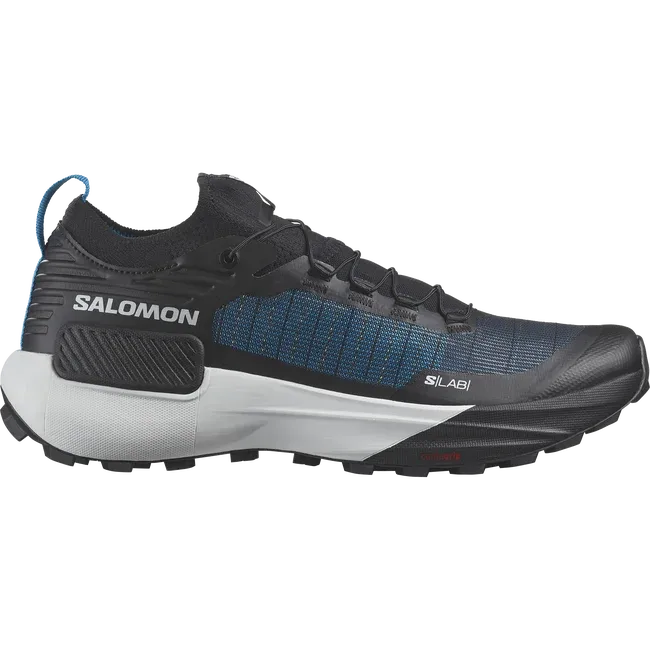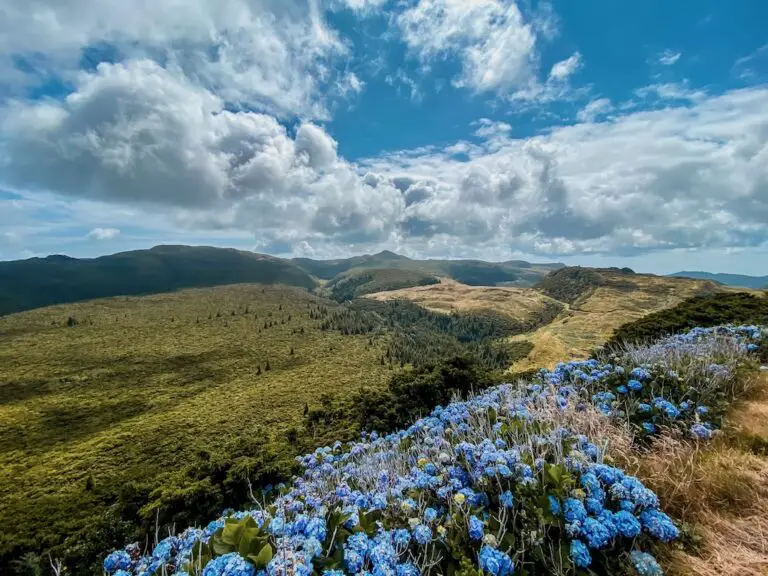CLOTHING NEEDED FOR A HIKE: WHAT TO WEAR ON THE TRAIL
There’s a saying in Norway: “Det finnes ikke dårlig vær, bare dårlige klær.”
Translation? There’s no such thing as bad weather – only bad clothing. If you hike often enough, you’ll understand why this isn’t just a cliché but a survival (or comfort) strategy.
Whether you’re heading out for a casual forest run or a full-day mountain adventure, what you wear matters. The right clothing will keep you warm, dry, and comfortable, while the wrong choices can turn even an easy hike into misery.
Here’s exactly what you need to wear on the trail – no fluff, just real, practical advice based on years of personal experience.
BASE LAYERS: KEEP SWEAT AWAY FROM YOUR SKIN
Your base layer is your first line of defense – it keeps you warm when it’s cold and cool when it’s warm by wicking moisture away from your skin.
Shirt
🚫 Rule number one: NO cotton. Once it gets wet, it stays wet. Instead, go for merino wool or synthetic blends that dry quickly.
When it’s colder:
Merino wool is your best friend! It’s breathable, naturally odor-resistant, and ultra-comfortable. I’ve used it for years, and it never disappoints.
✅Icebreaker – I own 2 sets (175g thin version and 250g for winter)
✅Helly Hansen, Danish Endurance – affordable, solid nordic brands
For summer
Honestly? Any running or gym t-shirt made from moisture-wicking polyester works fine.
✅ Arcteryx Cormac – My go-to due to its SPF rating, which protects against the sun.
✅ Patagonia Cool Trail – Budget-friendly, durable, and great for trail running.
Underwear
Hiking in regular boxers or briefs? You’re basically asking for chafing. Instead, opt for moisture-wicking underwear. These are the best I’ve used:
✅ Icebreaker Anatomica Boxers – Soft merino wool that won’t stink after a long day.
✅ Devold Merino Boxer Briefs – Keeps you dry and comfortable in all conditions.
MID LAYERS: ADD WARMTH WITHOUT BULK
This is where you trap heat while still letting your body breathe.
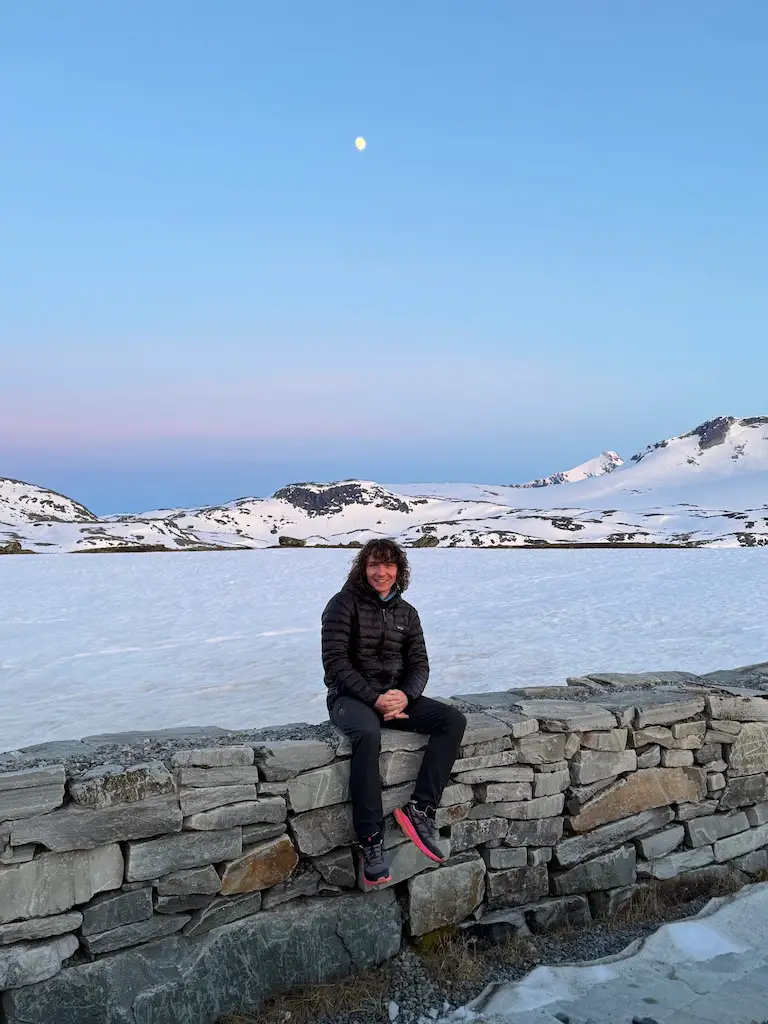
Lightweight Insulation
Think fleece, down puffers, or synthetic insulated jackets. Here’s what I wear:
✅ Patagonia R1 Air– A lightweight breathable fleece, perfect for active hiking and running in the cold. (Bought mine second-hand and still love it!)
✅ Patagonia Down Sweater – My ride or die mid-layer. Packs small, weighs nothing, and lasts forever.
💡 Pro tip: If you’re warm when you start hiking, you’re wearing too much.
OUTER LAYERS: PROTECT YOURSELF FROM THE ELEMENTS
Weather in the mountains changes fast. A windproof and waterproof outer layer is essential.
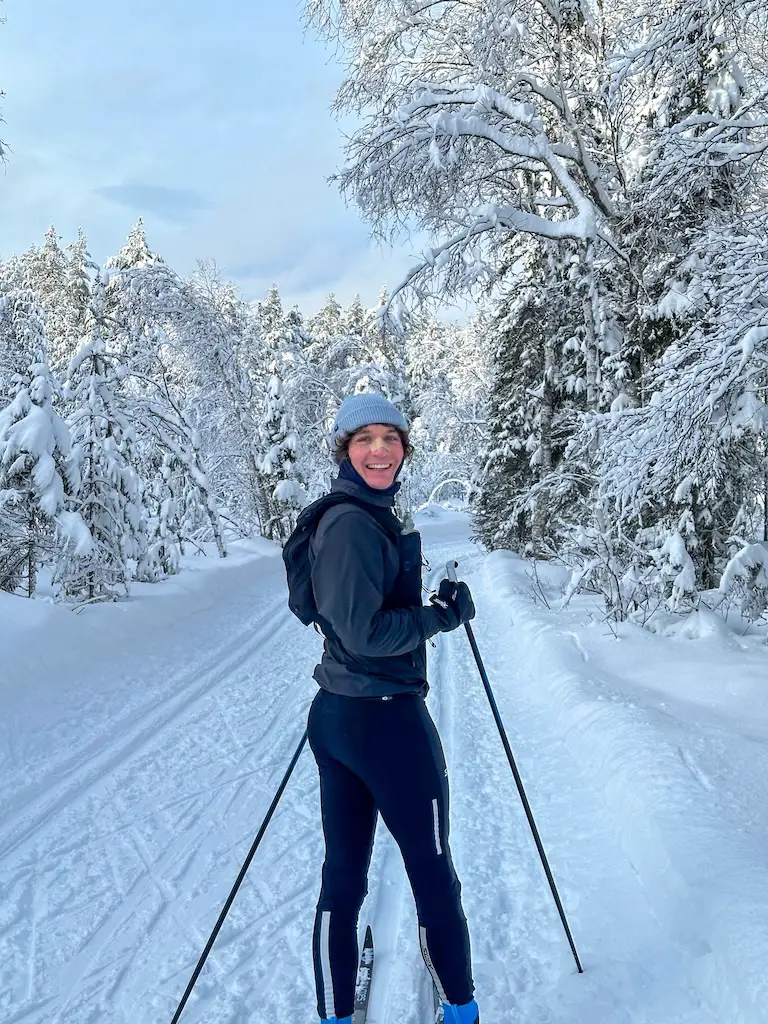
Rain Jacket (AKA: Your emergency shell)
Rain jacket
Often called a hardshell jacket. That’s typically a waterproof jacket that obviously also protects against the wind.
✅ A hardshell gore-tex jacket – Ultra-light, packs down tiny, and perfect for unpredictable weather.
✅ Pertex shield jacket – Similar to Gore-Tex but often cheaper and just as good.
Wind jacket
A softshell or windbreaker? It depends. Softshells breathe better but aren’t 100% windproof. I own both:
✅Rab Borealis – Superlight, perfect for light wind & drizzle. Been using it for 4 years, still like new.
✅Patagonia Houdini – Better wind protection, but less breathable. (Great for exposed trails!)
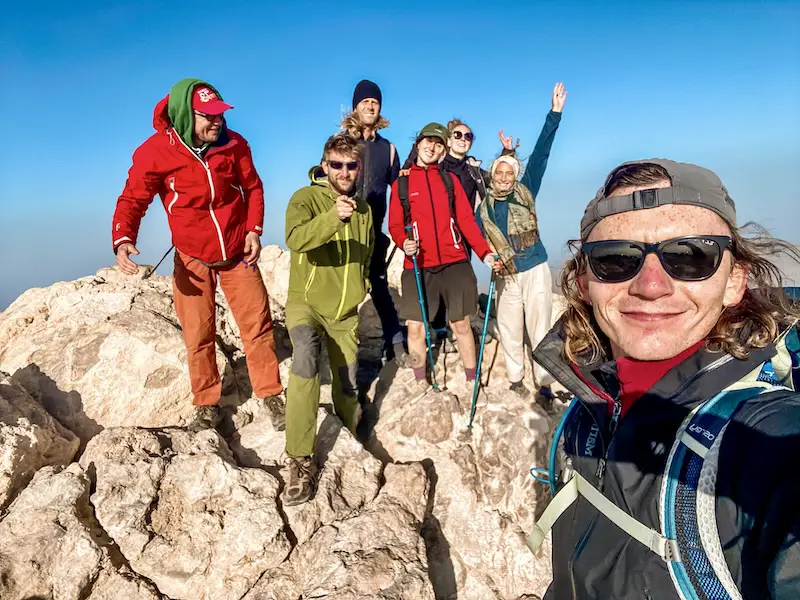
BOTTOMS: HIKING PANTS VS. SHORTS
Hiking in jeans? Absolutely not. You need lightweight, breathable, and flexible fabrics that let you move freely.
✅ Salomon Wayfarer – Stretchy, lightweight, affordable, and still holding up since 2019.
✅ Arc´teryx Gamma Pants – Lightweight, packable, and perfect for tough hikes (my 2018 pair still refuses to die!)
If you prefer shorts, just make sure they’re quick-drying and won’t chafe.
✅ Arc´teryx Gamma shorts – a classic choice for hiking and casual wear. (Owned mine for 6 years!)
FOOTWEAR: TRAIL RUNNING SHOES VS. HIKING BOOTS
Why I choose trail running shoes over boots
Hiking boots were once the only option, but trail running shoes have changed the game. Unless I’m carrying a heavy pack or tackling technical terrain, I almost never wear boots anymore. They’re lighter, dry faster, and make steep ascents way more fun. Check out the shoes I’ve been testing in 2024.
Socks matter more than you think
Good socks = no blisters. Invest in quality, and they’ll last for years. Best brands out there:
✅ Darn Tough Merino Wool Socks
✅ Smartwool socks
✅ Icebreaker
ACCESSORIES: THE SMALL STUFF THAT MAKES A BIG DIFFERENCE
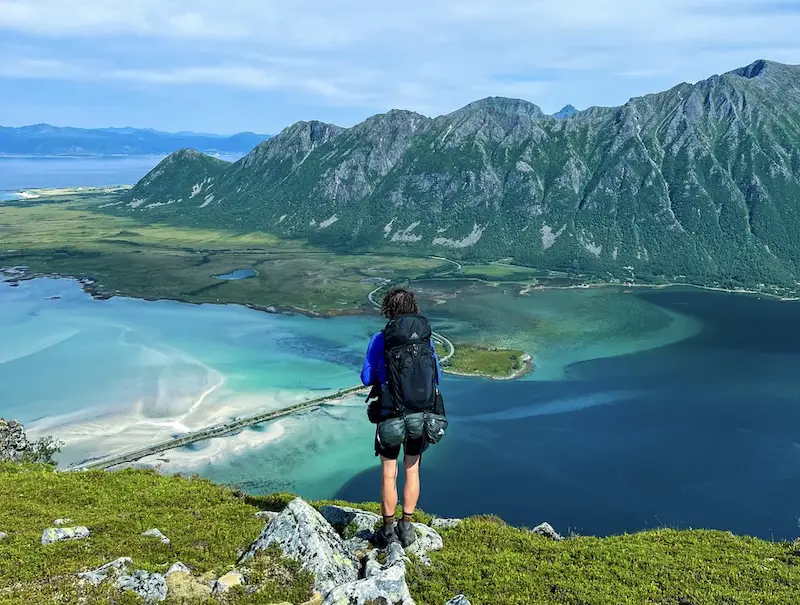
Must-Have extras:
🎒 Backpack – My favorites as of today:
Salomon Adv Skin 12 – Lightweight, designed for trail running but I also use it for hiking
Osprey dayback – Renowned for durability, lifetime warranty.
🧢 Hat & Buff – A cap for sun protection or a beanie for colder hikes. And honestly, buffs are the best invention ever—use them as a scarf, sweatband, or emergency face mask.
🕶 Sunglasses – Protect your eyes from glare, especially on snowy or exposed trails. (Polarized lenses help reduce eye strain!)
🧤 Gloves – A pair of lightweight gloves like the Salomon Lightweight Glove is perfect for cold mornings.🦯
🔦 Headlamp – Even if you don’t plan on hiking at night, always bring a headlamp. Getting caught in the dark without one is a nightmare. I carry Silva Smini – bright enough, weights 40g and USB rechargeable.
💧 Water Filter or Purification Tablets – If you hike in remote areas, carrying a filter bottle saves you from hauling liters of water.
⛑ First Aid Kit – Even a small emergency kit with bandages, antiseptic wipes, and blister treatment (like Compeed patches) is a must.
🛑 Emergency Blanket – Weighs nothing, but could save your life if you’re stuck in bad weather. Always in my pack.
🛠 Multi-tool or Knife – Useful for cutting, fixing gear, or opening food packs.
☀️ Sunscreen & Lip Balm – Sun + wind = chapped lips and burnt skin. Don’t skip these.
⚡ Electrolytes or Salt Tablets – Crucial for hot hikes or long distances. Hydration isn’t just about water!
🍫 Trail Snacks – Obvious but essential. My go-to: dried fruit, nuts, or energy bars.
FINAL THOUGHTS: LAYER SMART, STAY DRY, AND ENJOY THE TRAIL
You know, hiking isn’t about having the latest gear. it’s about being comfortable enough to enjoy the adventure. Just remember to layer smart, stay dry, and choose the right footwear so you can focus on tackling peaks or wandering through forests.
And if you’re still debating between hiking boots or trail runners, check out my full guide to the best trail running shoes in 2024.
See you on the trails! 😊





